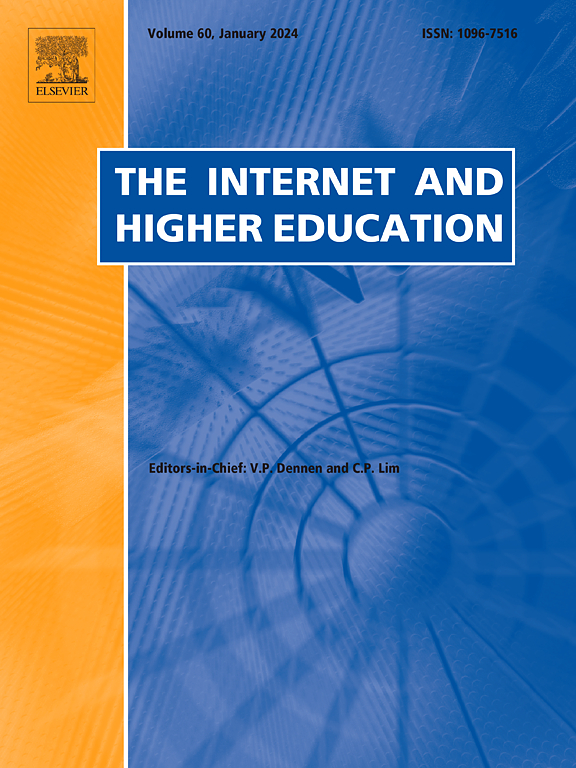学生对在线学习形式的偏好——潜在类别分析的结果
IF 6.8
1区 教育学
Q1 EDUCATION & EDUCATIONAL RESEARCH
引用次数: 0
摘要
考虑学生对学习形式的偏好是高等教育机构面临的一个重要问题,因为人口结构的变化带来了激烈的竞争。使用来自德国德根多夫理工学院(DIT)学生调查的数据,我们进行了潜在类别分析,以确定对学习格式的异质偏好。我们的研究结果表明,学生群体可以分为四个不同的部分,我们将其分类为传统学习者、混合式学习者、同步在线学习者和混合式学习者。我们提出了一个概念性命题,假设这四个类别如何从个人互动、时间和空间灵活性的不同需求中自然出现。我们为旨在迎合学生喜好的讲师和管理人员提供了潜在的方向。本文章由计算机程序翻译,如有差异,请以英文原文为准。
Students' preferences for online learning formats – Results of a latent class analysis
Considering students' preferences for learning formats is an important issue for institutions in higher education regarding high competition due to demographic changes. Using data from a student survey at Deggendorf Institute of Technology (DIT) in Germany we conduct a latent class analysis to identify heterogenous preferences for learning formats. Our results show that the student population can best be described in four different segments that we classify as traditional learners, blended learners, synchronous online learners and hybrid learners. We offer a conceptual proposition that hypothesizes how the four classes might emerge naturally out of differing needs for personal interaction, temporal and spatial flexibility. We derive potential directions for lecturers and administrators who aim at catering to students' preferences.
求助全文
通过发布文献求助,成功后即可免费获取论文全文。
去求助
来源期刊

Internet and Higher Education
EDUCATION & EDUCATIONAL RESEARCH-
CiteScore
19.30
自引率
4.70%
发文量
30
审稿时长
40 days
期刊介绍:
The Internet and Higher Education is a quarterly peer-reviewed journal focused on contemporary issues and future trends in online learning, teaching, and administration within post-secondary education. It welcomes contributions from diverse academic disciplines worldwide and provides a platform for theory papers, research studies, critical essays, editorials, reviews, case studies, and social commentary.
 求助内容:
求助内容: 应助结果提醒方式:
应助结果提醒方式:


